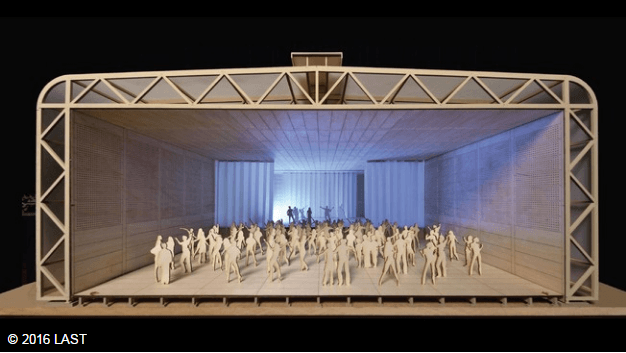Sep 22 2016
The public defense of the doctoral thesis presented by Loïc Fumeaux took place on September 9 at the Ecole polytechnique fédérale de Lausanne (EPFL). Conducted under the supervision of Prof. Emmanuel Rey, Laboratory of Architecture and Sustainable Technologies (LAST), this research has investigated the issues related to the integration of sustainability criteria into the design process of temporary event structures.
 Copyright 2016 LAST
Copyright 2016 LAST
At first, temporary architecture and sustainability concepts seem contradictory. Indeed, the thought of sustainability fundamentally based on the idea of acting in the long term, it may seem incongruous to think of associating with practices, which in essence is rather part of the idea of an answer immediate and temporary need.
However, the term "sustainable" is not to be understood in the sense of continuity but on the contrary, as a constant search for balance between the needs and the means implemented, which implies meeting the needs present without compromising those of generations to come. Later generations will indeed imperative to consider. So that their scope for action not be mortgaged by human activities of previous generations, it is necessary to provide some leeway, especially from the perspective of the built environment transmitted by inheritance.
Alongside these general theoretical considerations, it is now observed a glaring mismatch between the rapidly changing socio-cultural practices and the very slow renewal of the built environment. Whether in the way to live or work, or occupy constructed in the need for research space flexibility, the frame is characterized by the notion of "impermanence" increasingly important, in contrast with the perennial character commonly accepted and implemented in current practices. Most buildings are built to last, but are part of a society where everything is changing rapidly and so are facing frequent shifting situations between form and function of spaces.
In this context, the temporary architecture can therefore be a good potential to seek to meet the challenges of multiple time frames and offer a potential mutation. This architectural approach is thus fully in sustainability concerns mentioned above, since it aims to offer a potential for adaptation rather than fixed solutions.
Aware of the extent of the issue and complexity of reflections on the question of the impermanence of the frame, especially in view of the nature of architectural practices, this work focuses specifically on a little explored area that day at the research for which the notion of temporality is short intrinsic data: the field of temporary constructions events vocation.
Through an exploratory approach, research methodology convene an archetype of the ephemeral and temporary architectural design to examine it as an object of study that can ideally translate the challenges of a design associated with an approach based on time restricted use. The research first observed in detail these practices sometimes considered at the margin of the architectural discipline. The structured analysis of four representative case studies helps highlight their limitations in terms of sustainability. Part of the research, an evaluative approach includes the development of a novel methodology, specifically adapted to this type of construction and titled STAGE (Sustainable Temporary Arenas Global Evaluation).
The approach then proposes the development of an alternative solution, which optimizes its multiple performances in a perspective of sustainability and overall quality. Through an approach of "research by design", an integrated design process (IDP), both interdisciplinary and participatory, is experienced from the first sketches to the detailed development of a prototype.
Finally, from the product of this reflection, research in general rises and explores many possibilities of using this new system. This approach allows demonstrating the potential contribution of multiple functional areas, illustrating what could be the conceptual foundations of an "architecture of the event".
This doctoral research allows understanding structured way multiple challenges inherent in implementing the concept of sustainability to temporary constructions events vocation. The result is a research methodology both "multi-scale" and "multidisciplinary", which demonstrates the great potential for optimizing this type of construction and the need to achieve to grasp the design simultaneously at multiple scales and integrating all stakeholders.